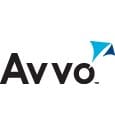 In a region where high tech know-how is the intellectual capital driving the next-generation of industry and commerce, from avionics to maritime, biofuels to biotech, real estate to virtual reality, and video gaming to e-tailing, locating Seattle’s brightest legal eagles on a search engine’s Local Map should be as easy as spotting a Starbuck’s store from a bird’s eye view. So why are Puget Sound law firms so far behind the curve when it comes to search engine marketing?
In a region where high tech know-how is the intellectual capital driving the next-generation of industry and commerce, from avionics to maritime, biofuels to biotech, real estate to virtual reality, and video gaming to e-tailing, locating Seattle’s brightest legal eagles on a search engine’s Local Map should be as easy as spotting a Starbuck’s store from a bird’s eye view. So why are Puget Sound law firms so far behind the curve when it comes to search engine marketing?
Our assessment of the status quo is based, in part, on the SEM diagnostic service Websitegrader.com, and includes more than a dozen interviews over the past four months with law firm marketers and industry insiders. Our findings reveal much about the intersection of legal marketing and “search and social media” and how law firms typically approach these activities. Our cross-examination also exposes the competency (or lack thereof) of several SEO firms whose efforts for their legal clients fall well below a passing grade, including (surprisingly) the Web marketing division of one of the nation’s leading brands in legal publishing. We’ve done the forensics (and the evidence speaks for itself). You be the judge!
diagnostic service Websitegrader.com, and includes more than a dozen interviews over the past four months with law firm marketers and industry insiders. Our findings reveal much about the intersection of legal marketing and “search and social media” and how law firms typically approach these activities. Our cross-examination also exposes the competency (or lack thereof) of several SEO firms whose efforts for their legal clients fall well below a passing grade, including (surprisingly) the Web marketing division of one of the nation’s leading brands in legal publishing. We’ve done the forensics (and the evidence speaks for itself). You be the judge!
In full disclosure, Seattle24x7’s sister company, SearchWrite.com, has been proud to serve one of Seattle’s largest “international” firms, Lane Powell, as well as a regional firm, Adler Giersch, and both these firms score extremely highly, earning a 99 and a 96 respectively on the aforementioned SEO assessment service, Websitegrader.com. That is all the more reason why we “know from where we speak,” beginning with this question: Why is “SEM” (Search Engine Marketing) so important to the legal industry in the first place?
A quick glance at the search engines’ highest-priced “bids” for auctioned, pay-per-click (PPC) advertising keywords indicates that a large number of the most competitive keywords in the Google Adwords inventory falls into the legal category. The average cost-per-click for the search phrase “Mesothelioma Lawyers” is above $50.00. Type “DUI Lawyers” and click on a sponsored ad, and the clickthrough debits the advertiser’s balance a hit of $49.78 per click. The cost per visit for a “criminal lawyer” in New York City is at least $45.00, and “trial lawyer” or “tax attorney,” among other terms in most major cities go from $20 to $35 per finger press. That can make or break a large daily budget cap before breakfast unless your business is arbitraging keywords for Google Adsense revenue.
is at least $45.00, and “trial lawyer” or “tax attorney,” among other terms in most major cities go from $20 to $35 per finger press. That can make or break a large daily budget cap before breakfast unless your business is arbitraging keywords for Google Adsense revenue.
Bottom line: When only 14% of traffic originates through PPC and 86% of leads come through organic search, it’s simply too much to spend for law firms who do not have lead processing built into their Web sites (like automatic “Click-to-Call,” for example).
The second reason SEM is critical is the marked resurgence of Local search as the new hub of the organic search engine referral process as well as the source of law firm reviews and ratings. When looking for a lawyer, not unlike a doctor, a dentist or an accountant, the searcher is typically looking for an advisor not far from where he/she lives or works. So instead of “real estate attorney,” the prospective client will type “Bellevue real estate attorney,” or “Seattle divorce lawyer,” or “Redmond patent attorney.” As of  November of 2010, Google, Bing and Yahoo have fully-integrated their local mapping and “Place-based” local listings with the primary search results. Indeed, Local now dominates the search results page for any query with a city, county, state or community modifier. It’s a no-brainer — without optimizing for geo-local search, social search and organic search together, yesterday’s high ranking search result is now an also-ran, and a previously lackluster ranking is now difficult to find at all.
November of 2010, Google, Bing and Yahoo have fully-integrated their local mapping and “Place-based” local listings with the primary search results. Indeed, Local now dominates the search results page for any query with a city, county, state or community modifier. It’s a no-brainer — without optimizing for geo-local search, social search and organic search together, yesterday’s high ranking search result is now an also-ran, and a previously lackluster ranking is now difficult to find at all.
Still, it’s about more than leads, “share of market” or even steering Web traffic to specific content within a site as outlined in a firm’s site links. Most firms see the effect of a prominent search presence as being included on the “A-list” during the research and fact-finding phase, or the validation of a referral from a colleague or offline source. Being in or out of the picture in the GYB (Google/Yahoo/Bing) Web roster of top law firms in a given market can have “unintended consequences” on the firm’s brand, its reputation and the visibility of its staff and expertise.
Analytics Missing from the Equation? Fault the SEM Firm Not the Law Firm
Whether its lead generation for a particular practice area, attracting aggrieved members to a potential class-action suit, building a list of subscribers for a blog, newsletter, YouTube channel or Twitter account, or simply promoting a dialogue within the community of peers and clients, measurability is integral to any online process. If you don’t check the dashboard, how will you know how far you’ve come, or when you’ve arrived?
“We’ve seen 10% of our traffic flow to a couple of individual practice groups compared to visiting the Website as a whole by using Google Analytics,” said Ryan Miller of Ryan, Swanson & Cleveland. “For us, the insight is what information is being viewed. Before making contact, people are looking to see what we’re all about.”
Julia Caplan of Perkins Coie explains that the firm monitors Web traffic very closely. “We’re very diligent in running reports. We monitor where people are coming in from, what practice people are looking at, what industries they are coming from and looking into.” PC’s Laura Johnston adds, “We also use a tool called NetInsight which filters out any of the traffic coming from within the firm. So we feel that we’re getting more accurate information.”
What is surprising is that the SEM firms are not connecting the dots — or dot-coms. As a result, there is a disconnect in terms of defining analytics’ goals or “funnels” on a site and setting up “conversion events” for site visitors. Every page that is seen by a user during a viewing session has a quantifiable value. By adding up those values and comparing the number of page views with the search term the visitor used to arrive at the Website, the law firm can understand which search terms are worth more, which terms yielded the most traffic, and which content is more meaningful. It takes a search marketing firm to thread the needle from keyword to conversion and make adjustments with each round. As far as we can tell, law firms appear to be on their own in this category.
Ultimately, taking stock of analytics is about measuring the return-on-investment in terms of the realization of actual goals and “expected behaviors” by visitors. ‘The goal of search marketing done right is not about ranking. It’s about measuring conversions, cost-per-acquisition and ROI” says Conrad Saam, director of marketing for Seattle-based Avvo, the industry leading attorney rating and review service. “The old school of thinking was that you needed to generate a lot of traffic. But if you take that to its logical extreme, there are a ton of ways to generate traffic if it doesn’t matter whether it’s quality traffic! Can you imagine a pay-per-click person telling you, ‘I’m really good at getting traffic. But I don’t know how it converts!’ The SEM industry still has far to go to understand the business side of marketing. To me, it is pretty astounding. Because if you don’t understand the strategy, you are not going to use the right tactics.”
Down to the X’s and O’s. A Competency Check.
When it comes to the physical optimization of a Web site, Content Management System, Facebook page, Blog, or Podcast, Vidcast or media distribution, the organizational architecture created by the Seattle firms we surveyed looked more like Seattle’s EMP than well-designed SEM.
A case in point. We assayed six web sites produced for local law firms that a leading legal publisher with a local marketing arm considers to be its top SEM clients in the region. The Websitegrader scores came in at 66, 63, 48, 64, 79, 65 and 74 (results on file) respectively. In academic parlance, that’s two F’s, four D’s, and two C’s.
What was confounding was the basic lack of SEO marketing aptitude exhibited by these sites: masthead graphics with the name of the firm, location and speciaities embedded inside of images that search engine robots can neither read nor index. Then there was novice “code management” where the text-to-html ratio was horribly unbalanced, meaning the Javascript code and CSS style sheets were not set up “off the page” and “called” as external files, as they should be, but massed “on the page” where the code competes with text. From poor or missing tagging to the use of generic anchor text in hyperlinks and a lack of such hugely important conventions as locally optimized pages were symptomatic of SEM industry amateurs, without certification and, especially in this case, a clue.
Can one site do it all for a large law firm with multiple practice areas and hundreds of attorneys in different offices? Architected correctly, and Pagerank distributed appropriately. the answer is yes. However in some cases a companion, satellite site or blog can also be effective.
AdlerGiersch, PS, a landmark institution in Seattle personal injury law that also has branch offices in Bellevue, Everett and Kent, keeps their Puget Sound personal injury office locations under one virtual Web roof but has created two special subject sites, one a popular industry glossary of terms, and the other a soon-to-launch personal injury news blog offering team blogging by every attorney in the firm.
 Designing the Architecture for Social Media Success
Designing the Architecture for Social Media Success
It’s hard to cultivate the true social media champions inside of a modern law firm when the assignment can fall either to the IT or marketing department where it can get siloed in a “Tower”-like configuration. Still other firms adopt a wheel-like “Tire” approach where each practice area may create its own social media program without a centralized approach.
Social media analyst Jeremiah Owyang of the Altimeter Group recommends a cross-functional “Hub and Spoke” configuration as best. “Like the hub on a bicycle wheel, a cross-functional group that represents multiple stakeholders across the company is assembled in the middle of the organization. The hub facilitates resource sharing and cross-functional communications (via the “spokes” in the wheel) to those at the edge of the organization (or the “tire”). Remember, 80% of social media is strategy, only 20% is technology,” Owyang advises.
Perkins Coie currently authors six different blogs says Julie Caplan. “We have several blogs that are aimed at different industries for different, practice groups and we tweet all of our blog posts. We definitely utilize Twitter, both as a firm for events we want to promote and for important news, and then, in some cases, for specialties like our privacy and security group. It [dovetails] with aspects of the new privacy laws so it’s a fairly hot area. The group also has their own Facebook page and community following.”
“We are using Twitter, not so much for [outbound marketing] but to listen to the interests of what our clients are up to. We also have a LinkedIn page for our law firm. And we have begin to use some online advertising in conjunction with our print ads and more traditional advertising,” related Ryan Miller.
Kevin O’Keefe, the founder of LexBlog, a Seattle-based company that specializes in helping law firms to socialize and market their expertise through blogging, chalks up the missing social media playbook at law firms to a lack of understanding.
“Senior leadership needs to learn how social media can be harnessed,” he says. “It is more about networking and nurturing relationships than marketing. Failing to demand senior management’s leadership here is a big mistake.”
JD Supra, Avvo, LinkedIn and Other Ways to Provide Timely Answers & Solutions
 Since the day when Google broke through with its scholarly “Backrub” formula, the patented algorithm that weights overall importance of an asset based on the number of attributions linked to it (like an academic paper’s citations), building online authority from outside the walls of a law firm has been vital to online marketing success.
Since the day when Google broke through with its scholarly “Backrub” formula, the patented algorithm that weights overall importance of an asset based on the number of attributions linked to it (like an academic paper’s citations), building online authority from outside the walls of a law firm has been vital to online marketing success.
 Both Seattle-based Avvo and the LinkedIn network create the opportunity for lawyers to answer questions posted to the service on a daily basis and demonstrate their expertise in real-time.
Both Seattle-based Avvo and the LinkedIn network create the opportunity for lawyers to answer questions posted to the service on a daily basis and demonstrate their expertise in real-time.
“There are an abundance of Q-and-A sites out there but not many places where you can have a lawyer answer a legal question,” says Avvo’s Saam. I could find 1,000 non-lawyers answering the question on Yahoo! Answers but the ability to get the data and the guidance from a lawyer on Avvo is very valuable. It’s one of our most popular features.”
JD Supra was founded by Aviva Cuyler as a legal repository service for lawyers and their firms to post articles, newsletters, court filings and presentations in a virtual portfolio that gets indexed by the search engines and gets noticed by the media and other content syndicators. Building a compendium of legal writings online is one way to be found for those “longtail” specialty terms. In JD Supra’s case, the long tail may wind up wagging the dog. A nifty JD Supra widget lets you stream the headlines of your submitted documents back to your Web site, blog, Facebook or other social media account and a new iPhone app called Legal Edge lets posts be discovered by people searching for legal information on their smartphones. JD Supra already has established content sharing agreements with Facebook and LinkedIn.
Lane Powell is one local firm who has committed a good deal of content to JD Supra, according to Cuyler as evidenced in the firm’s online profile. http://www.jdsupra.com/profile/LanePowell_docs/
The Final Verdict Awaits
Clearly, the time is now for the region’s legal profession to leverage the opportunities that exist in Local, Social and multimedia distribution. Therre has never been a better time, nor will be there a more sorely missed opportunity.
 The SearchWrite company, which provides in-house training for attorneys and legal marketers in search and social media, has shown where early movers have a distinct advantage. “Getting ahead of Local listings on the multiplicity of vertical engines, local mapping sites, business portals, and city guides with positive client reviews is going to be decisive in the new re-ranking formula of Google, Bing and Yahoo, said SearchWrite president Larry Sivitz. The firm’s latest efforts involve pushing the envelope in online legal marketing for a new author in the field of Collaborative Law with a unique online book tour that unfolds on UStream. “RSS syndication of video content over new cable TV channels via Roku and Boxee are another new frontier for our clients,” said Sivitz whose new book “SEO Power Tweets” was just released in an electronic edition and is available on on the firm’s Website http://www.searchwrite.com
The SearchWrite company, which provides in-house training for attorneys and legal marketers in search and social media, has shown where early movers have a distinct advantage. “Getting ahead of Local listings on the multiplicity of vertical engines, local mapping sites, business portals, and city guides with positive client reviews is going to be decisive in the new re-ranking formula of Google, Bing and Yahoo, said SearchWrite president Larry Sivitz. The firm’s latest efforts involve pushing the envelope in online legal marketing for a new author in the field of Collaborative Law with a unique online book tour that unfolds on UStream. “RSS syndication of video content over new cable TV channels via Roku and Boxee are another new frontier for our clients,” said Sivitz whose new book “SEO Power Tweets” was just released in an electronic edition and is available on on the firm’s Website http://www.searchwrite.com
Perkins Coie’s Julie Caplan may have best summed the situation ahead: “It’s a challenge for us to make sure that we are doing as much research, combing as many sites and being as up to date as we possibly can to meet the needs of the clients who are communicating on those various platforms. We want to best advise our lawyers on what they need to do to capitalize on that!” [24×7]
Reporter Hayley Puhn contributed to this article.















